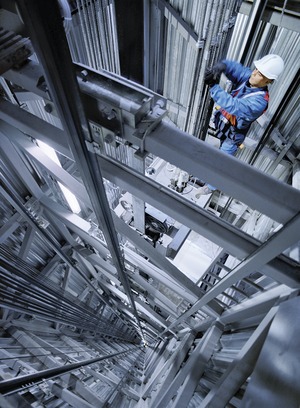

Johannes de Jong just about went berserk when he heard his company, elevator-maker KONE Corp., had pulled the plug on research into ultra-lightweight carbon-fiber hoisting rope, which de Jong thought could be the biggest advance in elevators since Elisha Otis introduced the safety brake in 1853.
 |
| DE JONG |
"I could see carbon fiber's business potential, so I decided to try to convince KONE's top management to reinstate the research," says de Jong, KONE's head of technology. Armed with a four-page paper, he presented his case to KONE skeptics and volunteered to sponsor the project.
One month later, carbon-fiber research was back on track. "I had put my name on the block," says de Jong, who has been with KONE for 36 years. "It's one thing to invent something and another thing to get the invention out of R&D and into the real world. We then had to find a way to make the rope work," he says.
It took nine more years. KONE introduced the patented system, called KONE UltraRope, last June in London. De Jong is more excited about it than ever.
"This is going to change the way elevators are made and the way tall buildings are designed," he predicts.
UltraRope replaces heavy steel cables with lightweight carbon-fiber belts and increases the maximum-feasible vertical run to one kilometer from about 600 meters. Among other pluses, the system significantly reduces elevator energy use and operational costs.
UltraRope makes sense for buildings 200 m or taller, says KONE. In a 400-m-tall building with 10 elevators, the belts would reduce rope weight by more than 90%, to under 12 tons. That reduction would save 130 MW-hours of electricity annually, claims KONE.
"UltraRope is a revolutionary new product," said Jay Popp, executive vice president, international, for vertical transportation consultant Lerch Bates Inc., after the UltraRope launch.
The buildings sector has known for decades that weight was the limiting factor for an elevator run, but "no other elevator company had come up with a viable commercial alternative before UltraRope," adds Antony Wood, executive director of the Council on Tall Buildings & Urban Habitat.
"The bigger impact, beyond the potential for a 1-km run, is that, the minute you reduce rope weight, the whole system becomes more efficient," says Wood. "I'm a big fan."



Post a comment to this article
Report Abusive Comment